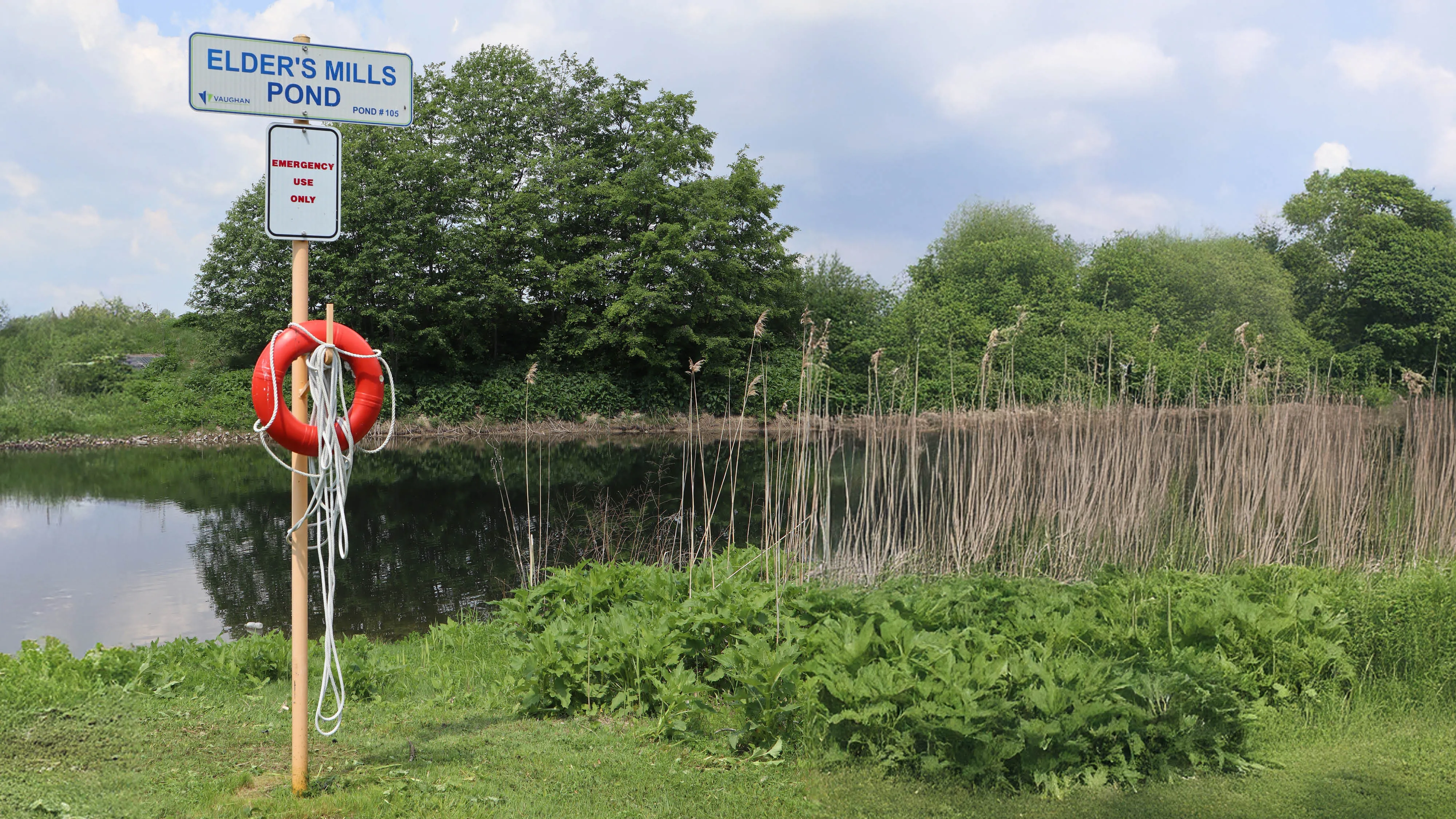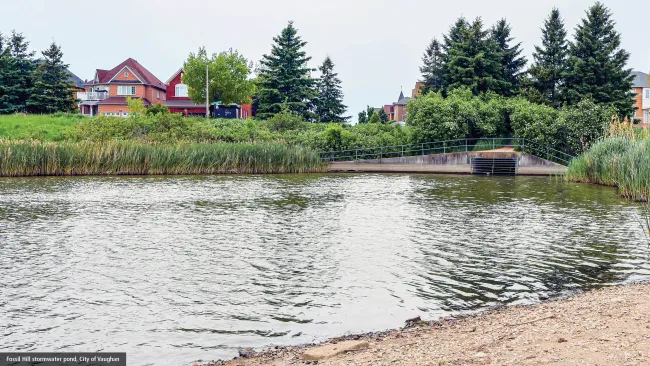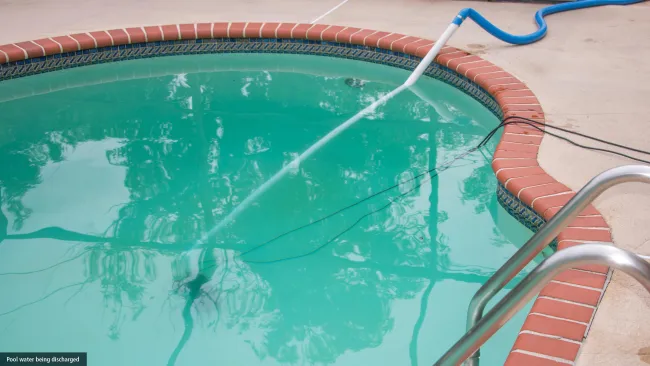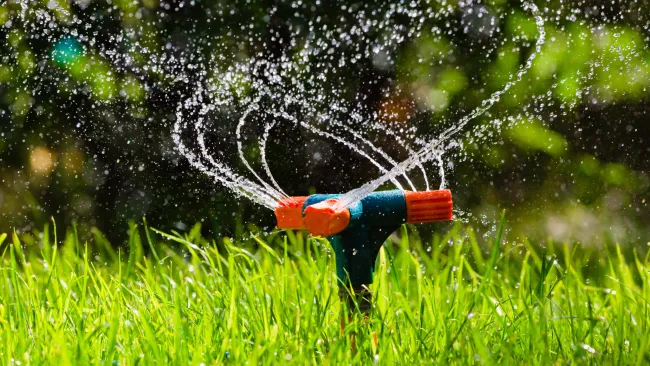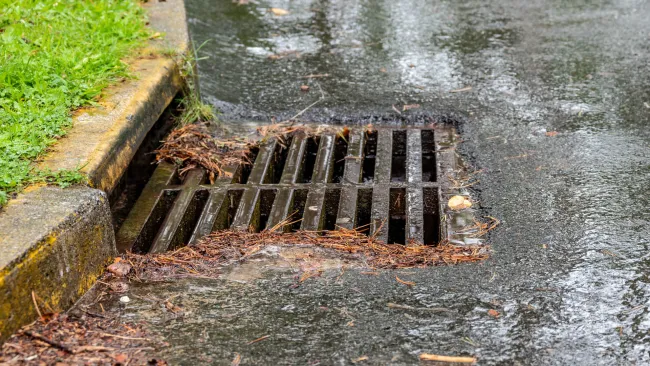Your questions answered about stormwater ponds
It’s important to know where it’s safe to swim in Vaughan – and that doesn’t include in the City’s stormwater management ponds.
While stormwater ponds may look safe for swimming, fishing or playing around, they are not! Please keep a safe distance away. The water entering the ponds is not treated, and the ponds are designed to temporarily hold water before releasing it slowly into the environment. This process means water constantly flows in and out of the pond, so water levels always change, making any activity in or around it unsafe.
Did you know the City operates and maintains more than 150 stormwater ponds across Vaughan? Ever wonder how they work? We’re answering your top stormwater pond questions!
What is a stormwater pond?
Stormwater ponds are human-made ponds built to gather and retain rainfall and surface water runoff before releasing it back into the environment at a controlled rate.
How does a stormwater pond work?
Stormwater ponds have at least one inlet that allows water to flow from the storm sewer system into the pond. Once the stormwater drains into the pond, any of the sand, dirt and other sediments swept up in the stormwater settles to the bottom of the pond.
The pond's outlet releases water into a nearby creek system at a controlled rate. This process helps make the water cleaner when it leaves the pond and goes back into rivers, creeks and lakes. This water is not treated at a treatment plant; therefore, everyone must do their part to keep it clean by ensuring only rain goes down the catch basins!
Is the City doing anything to reduce mosquitoes at stormwater ponds?
The City’s stormwater ponds are designed and maintained to minimize mosquito breeding. This includes following provincial guidelines to ensure suitable water depth, promoting diverse vegetation and ensuring the ponds function as intended through regular inspections and maintenance.
Ongoing maintenance activities that help reduce mosquito habitats include:
- removing debris and sediment from inlets, outlets and the bottom of the pond.
- repairing erosion and potholes along pond banks.
- stabilizing bare areas with vegetation to prevent soil loss.
- promoting diverse aquatic plants along the water’s edge.
The City will continue to collaborate with York Region Public Health to support their Mosquito Control Program, while ensuring stormwater ponds are properly maintained to help limit potential breeding areas.
Are stormwater ponds aerated?
Stormwater management ponds are designed to allow sediment and pollutants to settle out of stormwater before it moves downstream. Installing aeration systems, such as bubblers, in ponds not originally designed for them could disrupt the settlement process, especially during smaller rainfall events. Aeration systems can hinder sediments from settling to the bottom of the pond, which is a key function of the stormwater management system, and therefore not recommended.
How does the City maintain stormwater ponds?
Stormwater ponds must be properly maintained to control the water flow. Year-round routine maintenance includes removing debris in and around the pond that may impede water flow, managing only the invasive vegetation to ensure it does not inhibit the function of the pond and maintaining structures such as inlets and outlets. Additionally, from May to October, three rounds of litter pickup and grass cutting are completed at each pond to ensure staff have unobstructed access for operational purposes.
Why is there vegetation around stormwater ponds?
Vegetation such as plants, shrubs, trees and grass growing in and around stormwater ponds is integral to how the ponds function. This is because they:
- act as safety barriers for people walking in the area.
- discourage geese from landing in ponds.
- improve water quality.
- filter out coarse sediments (like sand or gravel) and pollutants from the water.
- prevent flooding.
- stabilize the ground when water levels fluctuate.
Why is there algae in stormwater ponds?
Misconceptions often arise regarding the health of stormwater ponds due to algae growth. However, algae in these ponds, especially during summer, does not necessarily indicate poor health. It is a natural response to nutrients being carried into the water, such as runoff from nearby lawns and gardens where fertilizers are used. When it rains, these fertilizers wash into the stormwater ponds, leading to green and cloudy water. From there, some algae may form in the ponds.
Algae can benefit a stormwater pond’s ecosystem by converting sunlight and nutrients into energy, providing food for organisms. A certain level of algae is expected and even valuable for a pond's overall health.
Why are there floating plants in stormwater ponds?
Summer’s warm temperatures and periods of rain are perfect growing conditions for algae and floating aquatic plants. Floating aquatic plants, such as duckweed and watermeal, may be mistaken for algae but provide some benefits for ponds if they only cover approximately 30 per cent or less of the pond’s surface.
These benefits include:
providing shade and cooler water temperatures.
absorbing nutrients, which reduce algae growth.
To learn more about the City’s stormwater ponds, visit vaughan.ca/stormwater.
For updates and news as they happen, subscribe to Vaughan News and follow the official corporate channels on X, Facebook, Instagram and LinkedIn.

